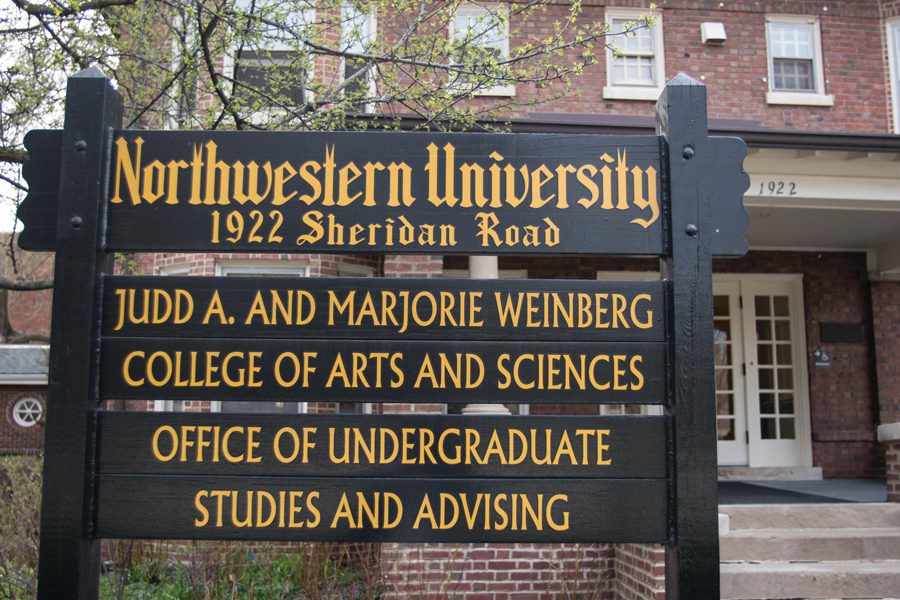Student brings non-credit ASL classes to campus
Colin Boyle/Daily Senior Staffer
A sign outside Weinberg’s Office of Undergraduate Studies and Advising, 1922 Sheridan Rd. SESP junior Ruthie Charendoff established non-credit ASL classes at NU this quarter.
May 1, 2018
When Ruthie Charendoff attended a conference on inclusion last fall and saw everyone speaking in American Sign Language, she said she realized for the first time how large the deaf population is in the United States. The experience inspired her to bring the language to Northwestern to build inclusion.
“Having students on campus who are just aware of deaf culture or aware of ASL is really helpful in starting to build that culture, build that awareness,” the SESP junior said.
With a $1000 inclusion programming grant from the Ruderman Family Foundation, Charendoff established non-credit ASL classes at NU this quarter. The class, taught by Columbia College Chicago Prof. Matt Andersen, has enrolled 16 people and is held in Kresge Hall every Thursday evening. Even with limited promotion, Charendoff said the class garnered a lot of student attention and already has a waitlist.
Charendoff said she established the class to promote more accessibility on campus. While more people have been advocating for mental health awareness, she said, there also needs to be more conversation around physical disabilities including deafness.
“You don’t really talk about inclusion in terms of physical disabilities because you don’t really see that many people in wheelchairs on campus,” she said. “Because the campus is not accessible for people with disabilities, they don’t even come here in the first place.”
SESP freshman Henry Lang said he decided to take the class to learn ASL as a resource for inclusivity. As a secondary teaching major, he said he could use the language as a tool in the classroom. He added that he hopes he can learn to translate his theater group’s performances for the deaf community.
Though the silence of the classroom took him aback at first, Lang said he has now grown more comfortable with the classroom environment. He said the language is accessible for anyone to learn and is surprised with the progress he’s made.
“It’s a very different way of learning, one that I haven’t experienced before, but the whole class being in silence really makes you (hyper-focused), and the instructor is phenomenal,” he said. “It’s honestly the highlight of my week.”
Charendoff said the end goal is to establish ASL as a for-credit class on campus, and she is looking for departments and administrators that would support the program’s establishment.
This isn’t the first time students have petitioned for ASL as a for-credit class. Though ASL classes were offered in 2010 at students’ request, the school removed the course after two years due to low enrollment numbers, said Mary Finn, Weinberg associate dean for undergraduate academic affairs.
Despite newly rising interest in ASL on campus, Finn said there are no plans to make the language a for-credit class. A language has to be offered for two years to fulfill the Weinberg language requirement, and the college has no plans to develop a two-year-long ASL curriculum for now, she said. Costs also pose a challenge because of the money that goes into building a curriculum and hiring new faculty, she added.
The college, however, will look into helping fund ASL classes as an extracurricular activity for students next quarter, she said.
“What I will do is reach out to a number of other units who should have an interest in this because it is an issue of inclusion and accessibility,” Finn said, “and see if we can get some funds together to help that extracurricular activity.”
Email: [email protected]
Twitter: @ck_525


